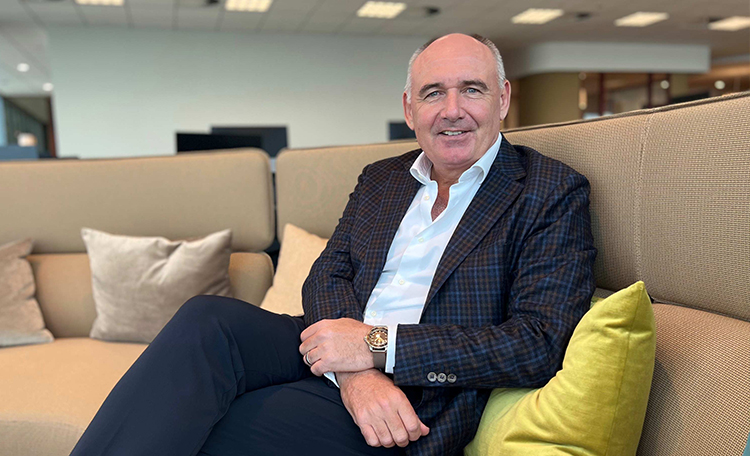Q. Ben, how important is it to have a real estate strategy as part of any carbon reduction plan?
For many occupiers, particularly those in the non-service economy such as mining or manufacturing companies, carbon emissions from their real estate operations are a blip in their total emissions. But typically, around 50 percent of an office building’s operational emissions are from the base building and 50 percent come from the tenants’ use of the building. So overall occupier emissions are significant: by some estimates, they account for over 6 percent of global emissions. They are also one area where we can really make inroads.
As we move towards a net-zero society and there is an increased focus on Scope 3 emissions [emissions that originate through the activities of suppliers either upstream or downstream from an entity] I expect that we are going to see the impact of net-zero carbon plans start trickling into supply chains and procurement choices.
In the not-too-distant future, potential clients or partners will be asking questions about what your carbon reduction target is – and if it’s not net-zero, there’s a chance they might go elsewhere. Buildings without net-zero plans might find they start struggling to fill space and green buildings might avoid leasing space to occupiers who don’t have net-zero ambitions. No company with a net-zero carbon target is going to want to accommodate, and ultimately pay for, a supplier’s emissions within their own Scope 3.
So I would say that having a real estate strategy is a vital part of any carbon reduction plan.
Q. What are the first steps occupiers should take to reduce the emissions from real estate?
The first step is a carbon reduction plan – ideally a net-zero pathway.
The biggest area of consumption for occupiers is usually electricity. So start by understanding your consumption and then look to improve that. Ideally, you want to start with avoiding any consumption you don’t need. Next, reduce what you do use by putting in energy efficient equipment – LED technology, sensor lights – and ensuring that your equipment is up-to-date and properly maintained. If you’re responsible for your HVAC (heating and cooling), then adjusting your set-points by one degree Celsius can make a 10% difference in electricity consumed by that equipment.
If you are a sole or majority tenant, you have a lot more influence – and responsibility – to improve the operational emissions of a building. If you're buying energy yourself, you can select green and renewable options. Unfortunately, a lot of occupiers rely on what's called an embedded electricity network, which is electricity purchased by the building owner. In this case you need to work with the owner, either individually or with other tenants, to review the energy purchasing agreement.
It’s worth remembering that institutional real estate investors are all moving towards net-zero targets, so they want tenants to be on that journey as well. It’s increasingly going to become a case of, ‘we both have these aspirations, let’s move forward together.’ Collaboration is key.
Ben Grimshaw, Sustainability Lead, Global Occupier Services, Asia Pacific at Cushman & Wakefield
Q. Beyond carbon reduction, what other steps can occupiers take to improve their environmental sustainability?
Waste sits almost entirely within occupiers’ control, and it is also one of the most tangible ways for employees to get involved. A waste audit is the first step; then following the waste hierarchy of avoid – reduce – reuse – recycle – recover. Clear signage is essential for a successful waste strategy, as deciding where to put waste is a split-second decision – you have to ensure the person throwing the waste gets it right.
Providing fresh drinking water to reduce reliance on single-use plastic water bottles is 101 but providing reusable lunch containers also sends a strong message to get rid of single use plastics.
Water usage is also relatively straight-forward for occupiers to manage. Water saving faucets, dual-flush toilets and automatic shut-off taps are now quite common. Once all the hardware has been installed and baselines have been captured, a regular program to measure, monitor, maintain and review usage of carbon, waste and water is essential.
Q. What about occupiers either taking on a new space or doing a new fit-out? What should they consider?
Your site has a major influence on what you can do. Having the right infrastructure will make your sustainability journey much easier so ideally, you want to be in an energy efficient, 6-star building – but even retrofitting older buildings can lead to huge savings.
Then for the fit-out, preparation is key. Your designers must first understand the base building – the options that are available for energy, waste and water efficiency – and the needs of your company, and marry both of these things into the design. There is no point having, for example, two beautiful, brushed stainless steel bins the same size in your kitchen/pantry area if 90 percent of your waste is recyclable. Details matter.
Ensure that your fit-out complies to the best environmental standards available in your area and that your designer prioritizes sustainability: choose materials from renewable resources, invest in water and energy saving devices like dual flush toilets, waterless urinals and good tap flow sensors and install systems that will allow you to capture – and then improve – usage data.
Q. How do occupiers justify the higher costs of green buildings?
It’s increasingly important to look at the long-term operational costs of a building. Your energy bills are going to be a lot more in a four-star energy rated building versus a six-star building, and sometimes buying offsets can cost more than reducing your energy usage in the first place, especially as the price of carbon increases.
A couple of years ago, carbon was a few US dollars a tonne. Now we’re getting up to USD30 to USD40 a tonne and some European markets are factoring in USD100 a tonne for carbon moving forward. So while on paper a four-star building might look like a more economical option from a rental perspective, once you factor in the long-term operational and potential Scope 3 costs, it may end up costing you more than the 6-star building.
There are also the non-financial costs, or the opportunity costs of not being in a green building. Employees are increasingly choosing companies that prioritize sustainability and employee well-being. In a tight employment market, a green building can help to attract and retain employees.
Q. Any final thoughts on environmental sustainability for occupiers?
It’s important to remember that sustainability is ultimately about efficiently utilizing resources – it starts with avoidance. If you avoid unnecessary consumption in the first place, you’re saving money for yourself and benefiting the planet. Yes, you can buy offsets – ideally through a gold-standard, internationally recognized offset scheme which provides reliable reporting for your stakeholders – but that should really be a last resort. We need to be doing as much as we can.
Ben Grimshaw is Sustainability Lead, Global Occupier Services, Asia Pacific at Cushman & Wakefield. Global Occupier Services delivers real estate solutions that are aligned to clients’ business strategies and goals, from reducing operational costs to enhancing the engagement and productivity levels of their workforce.








